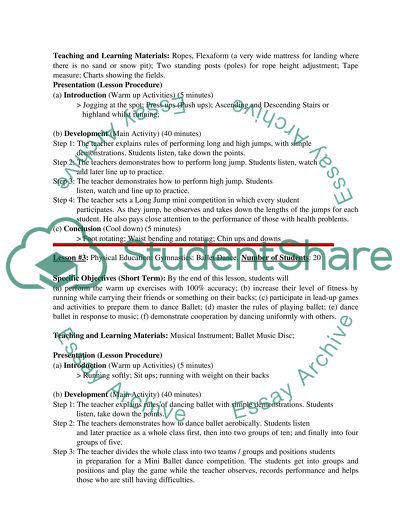Cite this document
(“Physical education lesson plan Essay Example | Topics and Well Written Essays - 1500 words”, n.d.)
Retrieved from https://studentshare.org/miscellaneous/1530989-physical-education-lesson-plan
Retrieved from https://studentshare.org/miscellaneous/1530989-physical-education-lesson-plan
(Physical Education Lesson Plan Essay Example | Topics and Well Written Essays - 1500 Words)
https://studentshare.org/miscellaneous/1530989-physical-education-lesson-plan.
https://studentshare.org/miscellaneous/1530989-physical-education-lesson-plan.
“Physical Education Lesson Plan Essay Example | Topics and Well Written Essays - 1500 Words”, n.d. https://studentshare.org/miscellaneous/1530989-physical-education-lesson-plan.


